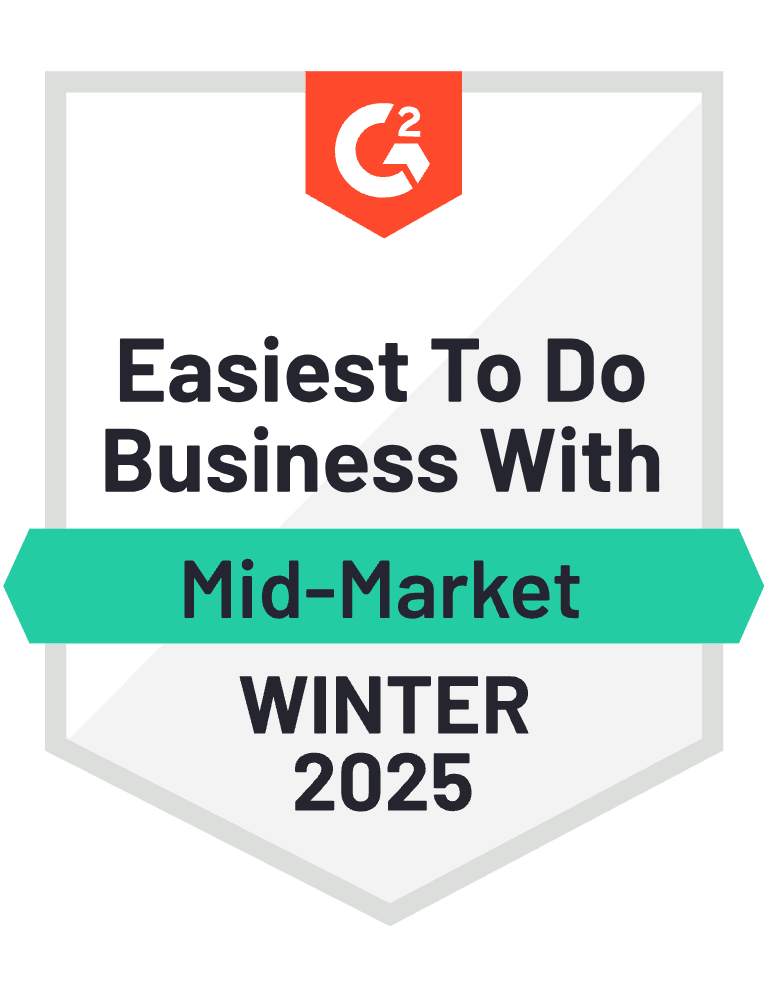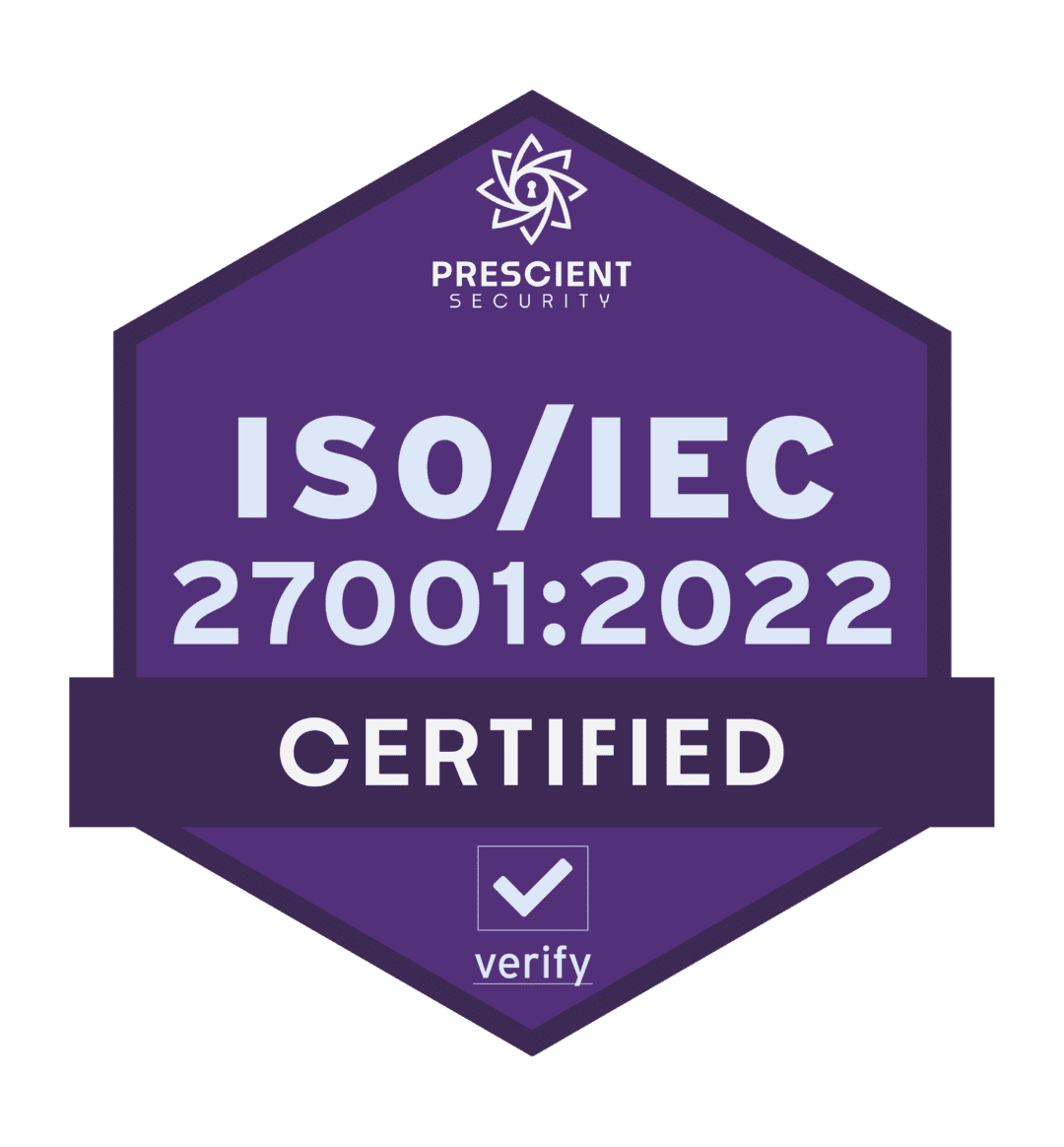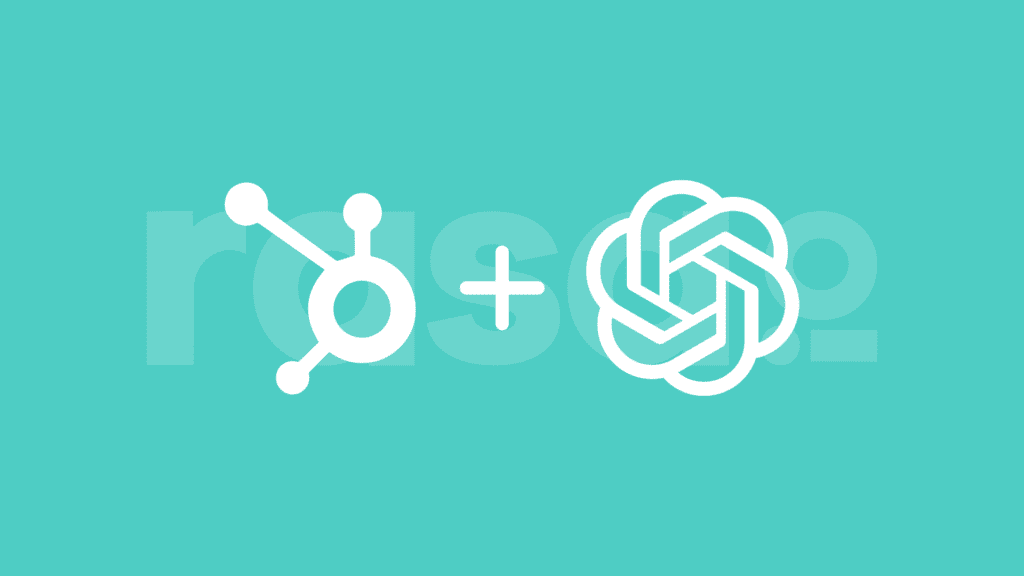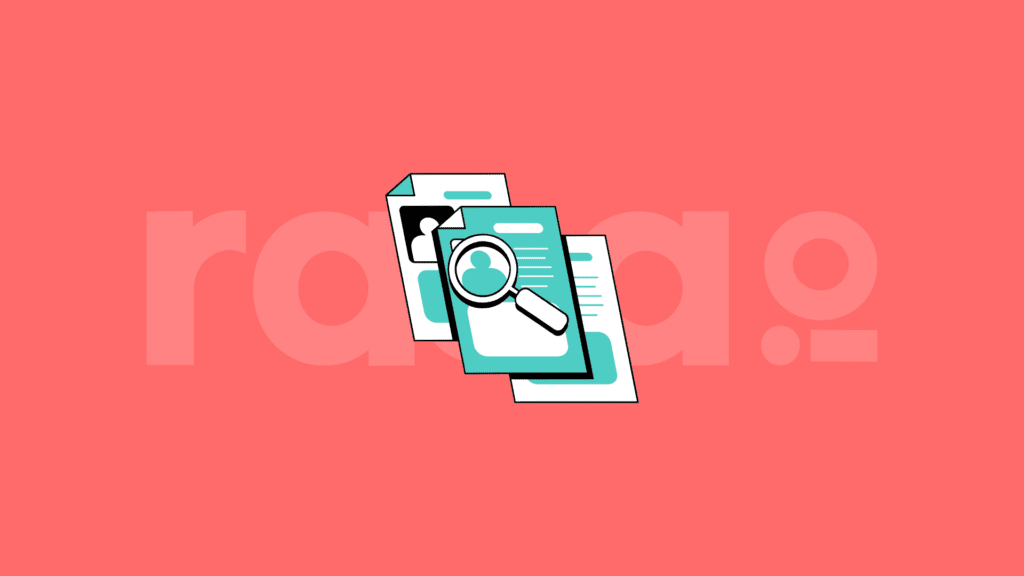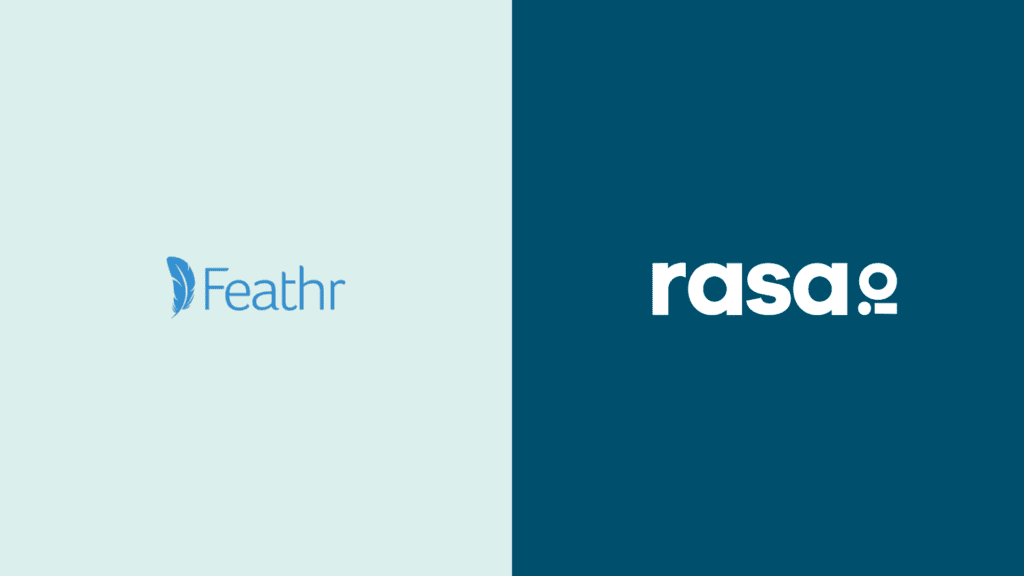If you want to see your organization grow and thrive, you have your work cut out for you.
Closing the gap between your message and the audience you hope to reach means banking on the right tools, using high-converting marketing channels, and — of course — having a tailored strategy in place.
That means …
You need a communication tool that helps you show up in front of your audience on a consistent basis.
You need a way to spread the word about new products, services, and initiatives without getting lost in the shuffle.
And you need a way to keep your brand image relevant and top-of-mind.
Enter: Email newsletters.
Email newsletters have become a marketing favorite for brands that are serious about nurturing their audiences and boosting engagement.
What’s more, email marketing efforts have an average ROI that’s pretty impressive.
In fact, according to Litmus, email marketing provides an average ROI of $36 for every dollar spent — higher than any other communication method.
But, as with many things, preparation is key to an email newsletter’s success.
That’s why in today’s article, we’re sharing an ultimate guide on how to effectively create email newsletters for your target audience.
Ready to learn more?
Let’s get started!
🗺️ Step 1: Gather resources and plan
Here are some decisions to think about before you begin composing your first email newsletter.
Choose a platform
Email marketing software tools have made themselves indispensable by continually offering and developing templates, editing features, automation, and scheduling.
But the choice of which platform to use is an important one.
Switching platforms midway through an email campaign because you’ve discovered it doesn’t fully meet your needs would be highly inconvenient and disruptive.
So, it’s worth your time to conduct research and choose carefully in the beginning.
Consider your budget, content plan, feature needs, and security options like web application and API protection implementation before settling on a platform. It’s also essential to choose a platform that can support your needs as they evolve.
Look into platforms like rasa.io, ActiveCampaign, Mailchimp, and Moosend, for example.
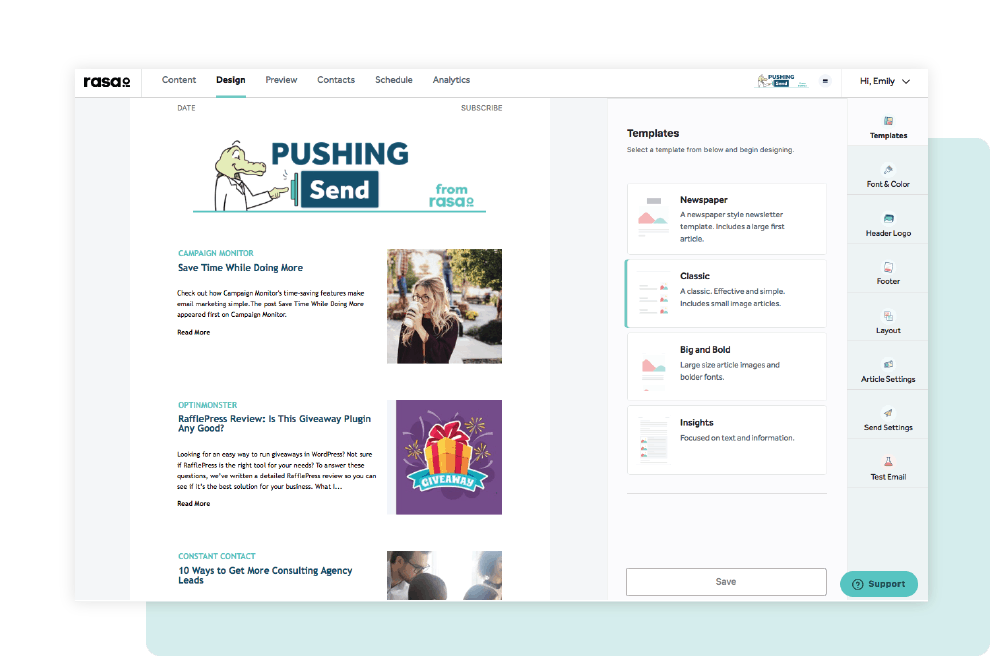
Choosing rasa.io as your platform of choice?
Glad to have you on board! Get started and sign up today.
Develop your email list
You’ll want your newsletter to have the largest possible impact from the beginning. To prepare for this, consider whether you’re taking advantage of every opportunity to grow your email list.
One of the best ways to do this is to offer something enticing in return, for instance, via gated content, freebies, personalized quotes, or entries to win prizes.
For example, Samsara, a company that offers a wide range of telematics and safety solutions for private and public fleets, does a great job at offering a library of content on corporate development, and users can easily opt into their email alerts.
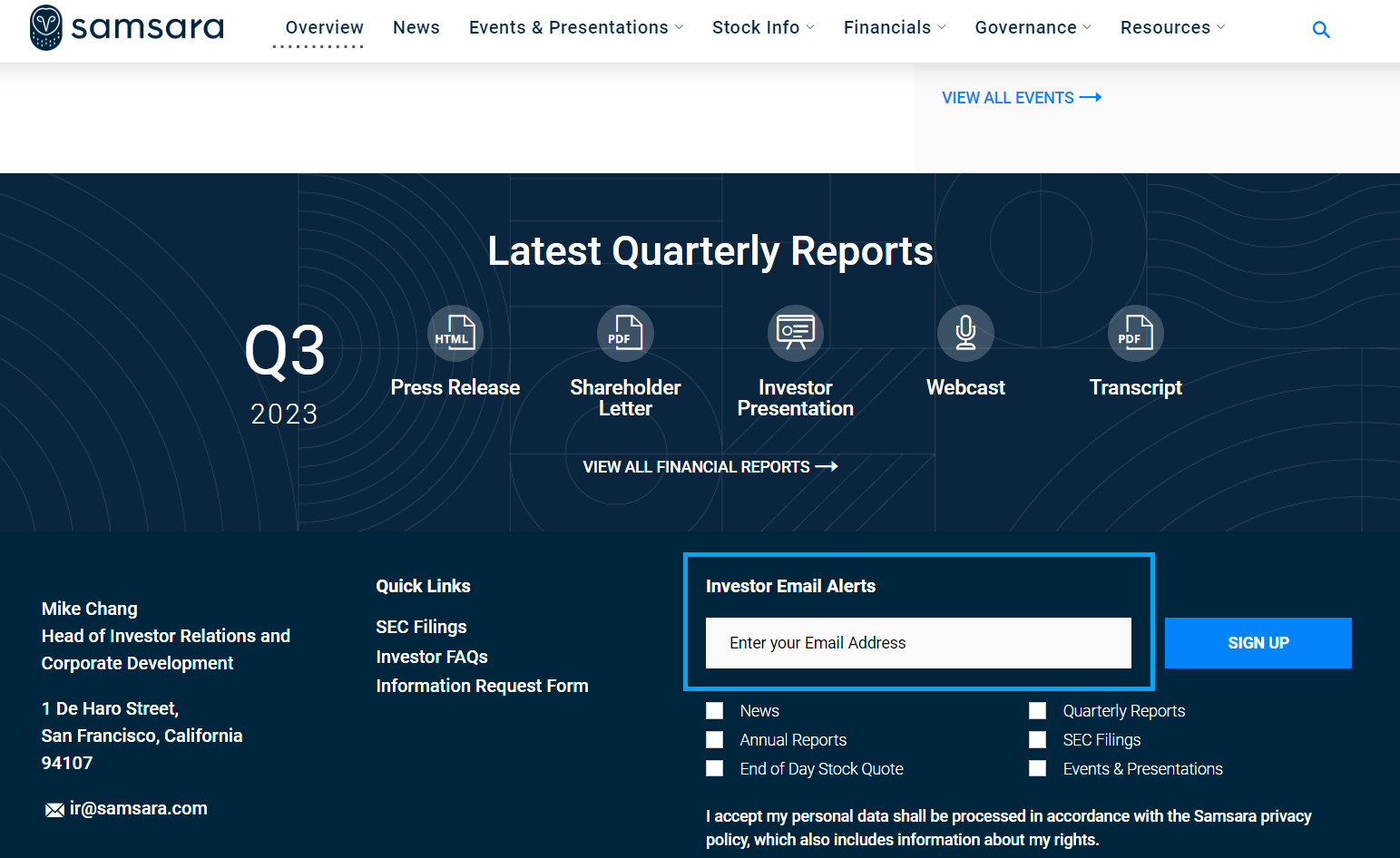
Developing your email list also means making sure the opt-in process is as seamless as possible.
Your job?
Remove as many barriers to entry as possible.
Choose a CTA button that’s easy to spot. Make sure your forms load quickly. And only add a few “necessary fields” on each contact form to prevent high bounce rates.
Hightouch has created an excellent example of this by placing highlighting the Sign up and Book a Demo buttons in bright green to attract site visitor’s attention.
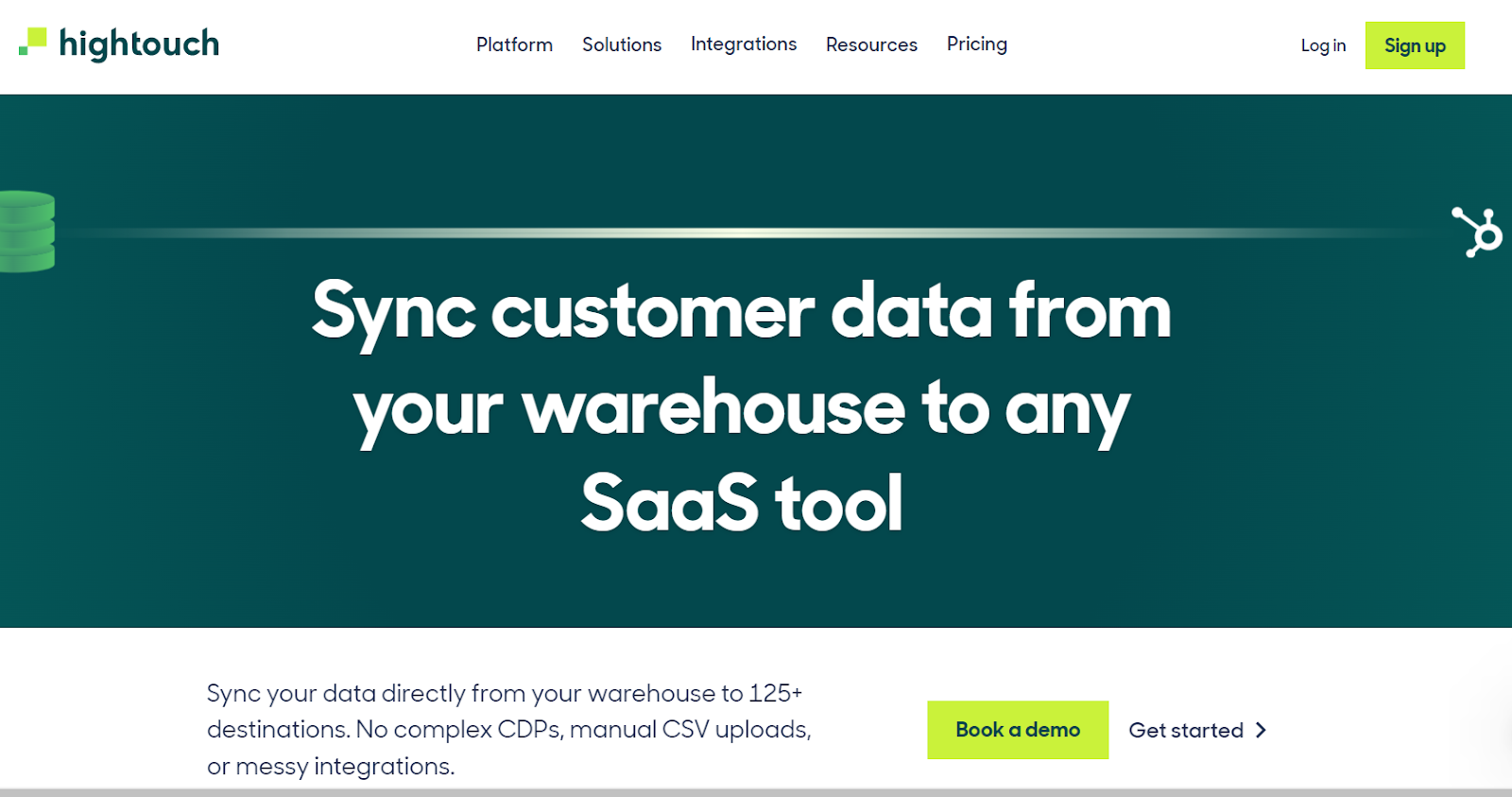
This allows online visitors easy, fast access to sign up as soon as they land on Hightouch’s homepage. The demo is an important part of their sales funnel as their tool is quite technical and requires additional steps for customer onboarding.
Pro tip: Look carefully at the resources you already have and consider personalized content, giveaways, and offers you could use as lead magnets to grow your email list and maximize its impact.
🔨 Step 2: Create and prepare
Now that you’ve thought through all of the important decisions to plan your email newsletter, you’re ready to gather and assemble content into a functional design.
Here’s how to do just that:
Choose and customize a template
There’s a lot to think about when designing effective emails newsletters: Layout, length, functionality, and more.
If you’re feeling intimidated, don’t worry. A wide range of pre-made template options is available through various platforms, like ActiveCampaign, rasa.io, and Canva, for example.
Templates can help by providing ideas for how to place all of the pieces your newsletter will need, such as body text, headings, images, buttons, and more. Consider your message and how to display it to achieve the greatest impact.
For example, if you are in the marketing industry, your target audience might be interested in the latest tools and AI for marketing.
Manage size settings
Remember that members of your audience will be viewing their email from a number of different devices and services. Make sure that the size of your newsletter fits within the adaptable dimensions.
Generally, a maximum width of 600 pixels will allow your newsletter to be viewed on most devices and platforms without disrupting any of the content.
There are fewer restrictions on the height of your design. But be mindful of how long you’re expecting your audience to scroll. Emails that try to pack too much in can disengage readers and sometimes activate spam filters.
Size adaptability is important for images as well.
Converting the graphics and images you’ll include in your newsletter to vector images will help optimize your email newsletters for viewing on all devices and ensure quick loading times.
You can choose from a library of free vector images or convert your own graphics to vector files.
Supply content
It’s time to add in the text and images that’ll deliver your message. Stay focused on the strategic goals you set earlier and always keep your audience’s needs and preferences top of mind before creating your content.
Determine the tone, features, and length that can best connect your audience with what you have to offer.
For instance, if you offer insurance coverage for condominium associations or landlord insurance, it wouldn’t make sense to send an email newsletter that discusses budgeting tips or interior design.
Instead, it should focus on how the majority of their consumers who are protected by their insurance, feel secure and content. You can communicate this via newsletters, written testimonials, video content, infographics, and case studies.
Images and other visuals can also affect the overall tone of your email message.
Add key visual elements to highlight the feelings that you want your reader to have, like heartwarming photo collages or humorous GIFs.
When in doubt, ask yourself:
- Would my audience like this?
- Would my audience read this?
- Would my audience appreciate this?
- Am I addressing readers by name?
- Am I offering tailored solutions when appropriate?
- Does this speak to my audience’s pain points and provide a solution?
- Is the copy tailored to my audience’s messaging and style preferences?
- Are my photos tailored to my audience’s preferences and in alignment with my brand image?
Additional tips
Be intentional with subject lines: Remember that the quality of your email subject lines can make or break an opportunity to reach a recipient. Use email subject lines that provide an immediate call to action when writing email newsletters for your target audience.
Proofread carefully: Spelling, grammar, and usage errors are embarrassing and can seriously undermine your message. Remember to proofread as you go, use a browser extension like Writer.com or Grammarly — or a teammate — to help catch mistakes.
Know the law: Make sure that you’re aware of applicable laws regarding email marketing in your area. You can protect yourself and your organization by making sure to operate in accordance with privacy laws.
Two important examples are CAN-SPAM, which requires your address and an unsubscribe option to be included in the footer of your email — and GDPR, which requires that marketers only send emails to recipients who have willingly opted-in.
🧪 Step 3: Test, send, and study
Make some final checks before you finally launch your campaign and put the data it generates to work.
Here’s how:
Test for accessibility on various email providers and browsers
There are a lot of different email providers out there, and they sometimes interpret code differently.
Before clicking “send”, test your content on as many different email providers and web browsers as possible so you’ll have a chance to spot and clear up any issues.
Analyze and adapt
Remember the KPIs that you set in the beginning? Once your email newsletter campaign begins hitting inboxes, it’s time to watch the data roll in and see what you can learn.
Ask yourself:
- With which goals was our email newsletter most successful?
- Where can we still improve?
- What resources are working well and what should be supplemented or replaced?
- What lessons can we apply to our next newsletter release?
Taking time to thoughtfully and honestly consider questions like these is the key to establishing an email newsletter initiative that can continuously improve. If it’s within reach, consider using AI tools for augmented analytics to get even more insight.
And you never know how time and energy investments like these can pay off in the long run. In fact, if you eventually decide to sell your business one day, having a solid email marketing strategy in place and an impressive email list can help boost your business’ valuation.
🎁 Wrap up
Expertly crafted email newsletters have enormous potential to increase conversions, grow your audience, and strengthen your brand.
Putting in the work to develop or improve yours now can have both short-term and long-term benefits, no matter what the future holds.
So, what are you waiting for? Get out there and create email newsletters that convert!
To your success!
Shane Barker is a digital marketing consultant who specializes in influencer marketing, content marketing, and SEO. He is also the co-founder and CEO of Content Solutions, a digital marketing agency. He has consulted with Fortune 500 companies, influencers with digital products, and a number of A-List celebrities.




